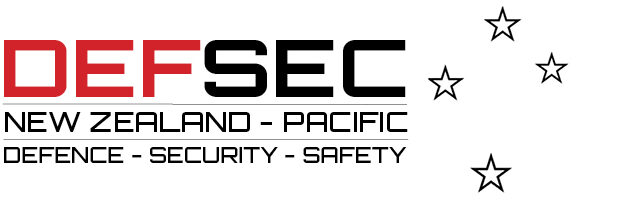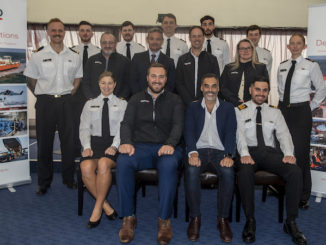
Equipping naval personnel with the state-of-the-art tools and opportunities necessary to perform their duties effectively also allows them to realise their full professional potential, writes Rod Bird, Head Austal Technology.
In an era where technological advancements and strategic imperatives are reshaping naval operations globally, navies around the world face a critical challenge that strikes at the very core of their operational readiness: workforce retention.
The Royal New Zealand Navy’s recent decision to withdraw its Offshore Patrol Vessels, Otago and Wellington, along with the Inshore Patrol Vessel Hawea, underscores a troubling trend that has not spared even the most venerable maritime forces. Similar to New Zealand’s predicament, the Royal Navy and the Royal Australian Navy have been compelled to sideline major fleet units, all due to acute shortages in critical workforce competencies.
Echoing this sentiment, the Chief of Maritime Staff of the Royal Canadian Navy has sounded the alarm in a new video, describing the service as being in a “critical state.” With ships that have surpassed their intended life cycles and a glaring deficit of crew to operate them, the message is clear: the issue of personnel retention is not just a national concern but a global crisis that demands immediate attention.
Read this article in the digital edition:
The retention challenge encompasses a myriad of factors, each contributing to the complexity of maintaining a robust and capable naval workforce. Among these, a critical yet often overlooked aspect is the alignment of the workforce’s expectations with the resources and tools provided to them. This article delves into the imperative of equipping naval personnel with the state-of-the-art tools and opportunities necessary not only to perform their duties effectively but also to realise their full professional potential.
In an age where technological superiority is synonymous with tactical advantage, the ability of navies to retain their best and brightest hinges significantly on their commitment to innovation, professional development, and the empowerment of their people.
Transformational generation of recruits
Naval leaders, through direct engagement with the current and next generation of recruits, have come to recognise the intrinsic qualities of these young men and women are every bit as suited to the demands of naval life as those of previous generations. In fact, in several key areas—particularly in their readiness to engage in open communication and collaborative problem-solving—this cohort may well represent the greatest potential of any group of recruits navies have ever seen.
This generation brings a distinctive perspective to their service; they are not content to simply accept existing procedures and practices as the best or only way to accomplish their missions. Armed with a keen sense of innovation and efficiency, they are quick to question and challenge the status quo, especially when they identify more effective ways of doing business.

Royal Australian Navy Evolved Cape-class Patrol Boat, ADV Cape Woolamai. Image: Austal.
This characteristic, presents an unprecedented opportunity for transformation within the naval forces, urging a re-evaluation of traditional processes to embrace more dynamic, effective approaches.
This generation of naval recruits comes with an inherent understanding and appreciation for the potential of information technology to amplify their capabilities and achievements. Growing up in a digital era, they are acutely aware of how technological advancements can streamline processes, enhance operational efficiency, and ultimately lead to more significant outcomes. Consequently, these recruits expect the naval enterprise to supply them with tools specifically tailored to their operational needs and tasks.
This expectation marks a shift from the traditional paradigm where personnel had to manage the constraints and functionalities of the tools at their disposal. Instead, they anticipate a more intuitive integration of technology in their daily operations, where the tools are designed and implemented to complement and elevate their work, not dictate or limit it.
This mindset underscores a broader challenge for naval leadership: to bridge the gap between technological potential and current operational practices, ensuring that the arsenal of tools available to sailors is as advanced and adaptable as the individuals who wield them.
Austal has taken a significant step forward in addressing the evolving needs and expectations of naval personnel, particularly those tasked with ensuring the material availability of ships and their technical systems, with the development of the Lifecycle Upkeep Sustainment Intelligence (LUSI™) Solution.
This solution set combines a variety of Commercial Off The Shelf (COTS) applications with bespoke applications curated to offer a holistic capability that aligns with the functional requirements of naval capability sustainment. By integrating these digital tools, the LUSI Solution aims to streamline processes, enhance operational efficiency, and significantly improve the sustainment and upkeep of naval assets.
LUSI represents a new approach to asset management over the entire life cycle from initial acquisition out to Planned Withdrawal Date (PWD), offering a major improvement in data acquisition, management, and transposition of that data into real-time intelligent information to effectively manage entire fleets, not just individual assets. The solution changes the asset management paradigm for customers from asset failure reporting to a data driven predictive analytics model.

The LUSI Solution is a multifaceted tool designed to significantly bolster the capabilities of various stakeholders within naval operations. Through its suite of digital solutions, it provides targeted support to the engineering team at sea, asset managers responsible for Maintenance Repair and Overhaul (MRO) budgets, and the Maritime Component Commander and their staff. Specifically, it can enhance the functionality and decision-making processes for these key roles by:
Support for the engineering team at sea:
LUSI equips the engineering team with real-time data analytics and diagnostic tools, enabling them to monitor the health and performance of ship systems continuously. This immediate access to information allows for prompt identification of issues, predictive maintenance, and reduced downtime, ensuring that ships remain operational and mission capable.
Empowering asset managers with MRO budgeting:
For asset managers, LUSI provides a comprehensive overview of the fleet’s maintenance needs, integrating historical data and predictive analytics to forecast upcoming repair and overhaul requirements. This capability allows for more accurate and effective budgeting, ensuring that resources are allocated efficiently, and maintenance schedules are optimized to meet operational demands without overspending.
Enhancing the Maritime Component Commander’s understanding of operational readiness:
At the operational command and control level, LUSI offers the Maritime Component Commander and staff a dynamic assessment tool for evaluating the fleet’s readiness in response to operational contingencies. By aggregating data across various platforms and systems, the solution provides a real-time operational picture, highlighting the availability of assets, their current status, and potential limitations. This enables more informed decision-making, allowing for rapid adjustments to fleet deployment and tasking to meet emerging threats or missions.
The following scenarios build out these features:
A day in the life of a ship’s engineering team using the LUSI EAM module
In a LUSI managed fleet, the Engineering Officer (EO) and the engineering leadership team will each day access the EO lobby in the LUSI EAM (Enterprise Asset Management) module. The lobby provides them an overview of daily preventive maintenance tasks, corrective maintenance (that for which both ship’s staff and the engineering support base are responsible), Operational Defects (OPDEFs), maintenance period planning, and overdue work on board the vessel. The EO is also able to view the Inventory / Ship Stores lobby to identify the status of stores demands.
The Ship Planned Maintenance tile provides the EO with a seven-day look ahead of maintenance tasks that the engineering team need to complete. The EO can assign the work to a specific technician in the LUSI EAM module and monitor the progress of the Technician completing the work. Once the Task is completed, the EO will review the notes input on the mobile tablet and capture of Objective Quality Evidence (OQE) provided by the Technician and close out the work order in the EAM.
Technicians are each provided with a mobile tablet that advises which jobs they have been assigned and this enables entering of OQE on the move as well as accessing the documentation including drawings and specifications that they need to complete the work. The centralised repository for the documentation is configuration managed to ensure that all documentation is kept up to date across all vessels whether in operation or alongside through replication ship to shore.

Cape Class Patrol Boat.
MRO Budgets are being compiled for the next operating budget cycle. The Asset Manager needs to make intelligence-based budgeting decisions.
As LUSI includes a full Enterprise Asset Management (EAM) System, Work Orders (WOs) can be loaded with the cost of completing the work detailed. Regional pricing can be applied to the WOs where maintenance is being carried out at various locations.
The LUSI EAM also provides the ability to use the Technical Maintenance Plan (TMP) to forecast preventive maintenance in short/medium and long term horizons. The EAM can forecast out scheduled maintenance activities to Planned Withdrawal Date (PWD) as WOs can be generated out to any date required by the maintenance organisation based on the technical maintenance plan. It can also forecast contingencies for corrective maintenance based on historical information and trends that is intuitively contextualised to the stage in the life cycle of the vessel.
The solution also includes historical Failure Reporting, Analysis and Corrective Action System (FRACAS) information. This allows the asset manager to average costs for unscheduled Late Activity Requests (LAR’s) assigned last minute to Maintenance Activities, Corrective Maintenance (CM) Debt and CM events. In addition, it captures emergent work while undertaking Maintenance Activities. This can be annualised across the Fleet, Group or Class and forecast into the future with provisioning for growth factors or stage of the life cycle of the asset.
Unlike legacy systems, LUSI collects data directly from Integrated Platform Management Systems (IPMS) on board the vessel. Fault Reports are raised directly in LUSI EAM on board the vessel through an event management system if systems are being operated outside safe parameters or pre-determined operating profiles. Data concerning Mean Time To Failure (MTTF – failures that require system replacement), Mean Time Between Failure (MTBF – failures that can be repaired without system replacement), and Mean Time To Repair (MTTR) is compiled by LUSI, allowing MRO planning, supportability analysis and ultimately into advanced asset management schemas.
The LUSI EAM enables the asset manager to accurately forecast spares’ consumptions, consumables as well as planned maintenance. Using the regional price book feature, a user can view the planned cost of the Usage Upkeep Cycle of a vessel – allowing the user to get an accurate profile of the maintenance cost for a vessel’s operating plan.
When faced with the challenge of developing long-term Maintenance, Repair, and Overhaul (MRO) budgets under financial constraints, asset managers often have to make difficult trade-offs that could affect the availability and readiness of naval assets. These decisions frequently involve accepting a degree of availability risk to align with forecasted funding availability.
In such scenarios, the decision to truncate or omit certain maintenance activities, as outlined in the Technical Maintenance Plan (TMP), must be approached with a comprehensive understanding of the potential implications on operational capability and long-term asset integrity. LUSI provides support for an objective and quantified risk based engineering judgement, supported by structured data in LUSI.
LUSI significantly enhances the asset manager’s ability to make these critical decisions in a more informed manner. With LUSI’s integration of FRACAS data, asset managers are equipped with a robust analytical tool that provides a detailed history of asset failures, maintenance outcomes, and the effectiveness of previous corrective actions.
A short notice contingency arises, the Maritime Component Commander (MCC) needs to understand ASAP the readiness of ships to deploy to a certain location for a period of time.
Using the Fleet Summary dashboard in the LUSI Sustainment Operational Intelligence (SOI), the MCC is able to see the status of different vessels in different classes across the Fleet. The MCC is able to identify readiness based on the vessel’s operational status as well as number of OPDEFS that are open per vessel. Using this information, the MCC is able to drill down on a particular vessel to view more information on the Vessel Status dashboard.
For each vessel shown as part of the Vessel Status dashboard, the MCC can view:
- Engineering Changes in progress / approved / embodied
- Current Usage and Upkeep Cycle (UUC)
- Maintenance Plan for Vessel
- Maintenance Debt of Corrective Maintenance (CMs) and Preventive Maintenance (PMs)
- Event Management and Asset Performance Information System (APIS) Alerts
- OPDEFS
- Conditions of Class
The integration of the LUSI Solution into the Maritime Component Commander (MCC) team’s operational toolkit represents a significant enhancement in their ability to monitor and assess the fleet’s condition and readiness. It does not replace the need for professional advice regarding the condition of specific ships, however, it greatly augments the decision-making process by providing a data-driven foundation for identifying and prioritizing issues of concern.
The value of LUSI to the MCC and their team lies in its ability to aggregate, analyse, and present relevant data in a manner that is both accessible and actionable. This capability allows the MCC team to quickly identify potential problem areas or assets that may require closer inspection, thereby streamlining the process of engaging with the engineering support base. Instead of broad inquiries or assessments, the MCC team can initiate discussions that are highly focused on specific concerns, informed by the detailed insights offered by LUSI.
In Conclusion
While the functions of consolidating and analysing critical operational and maintenance data have long been the purview of highly skilled engineering, logistics, and operations personnel, LUSI introduces a transformative approach by centralising this vast array of information into a single platform. This integration not only streamlines access to vital data but also establishes a unified source of truth that is both modern and attuned to the dynamic needs of contemporary naval operations and crew.
The Royal Australian Navy’s (RAN) adoption of LUSI for the Cape Class and Evolved Cape Class Patrol Boats serves as a testament to the system’s utility and impact. Feedback from users, particularly from crew and technicians engaged with LUSI on a daily basis, revealed that LUSI meets the aspirations and expectations of the modern sailor by marrying state-of-the-art IT solutions with the operational needs of a 21st Century Navy. It has significantly bolstered the capabilities of those responsible for maintaining and managing naval assets and enabled performance of their duties with unprecedented precision and insight. LUSI’s significance extends beyond the expectation of the new generation of crew operating advanced vessels that use information technology in all aspects of their life, it provides the potential to serve as a cornerstone for naval operations worldwide, promising a future where technological innovation and operational excellence go hand in hand.







